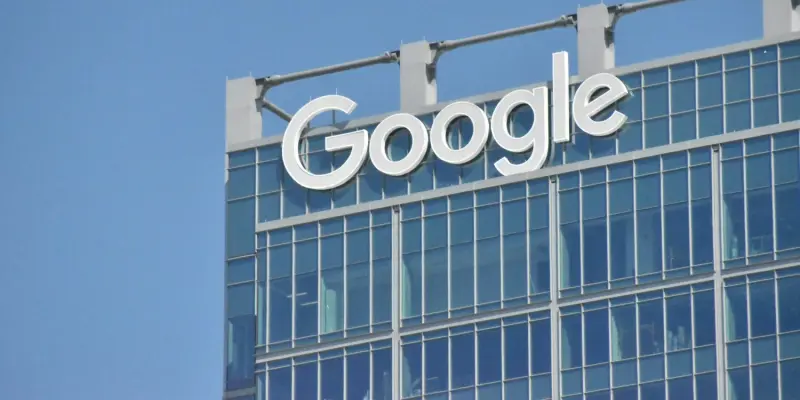In a rapidly evolving digital landscape, Google’s recent strides toward automation have sparked a conversation that extends beyond the confines of technological advancement. The ongoing ambivalence surrounding Google’s Performance Max (PMax) tool encapsulates a broader debate: Is Google’s automation effort alienating its advertisers? PMax was showcased extensively at the last Google Marketing Live event, intended as a revolutionary leap toward maximizing ad performance through full automation. Yet, lurking beneath its much-touted benefits are echoes of discontent from advertisers who remain skeptical of Google’s top-down approach. Despite being promoted as an avant-garde tool for peak ad performance, PMax is having difficulty achieving the desired resonance with advertisers. There’s an underlying tension in Google’s internal correspondence, revealing a palpable disconnect between the company’s automation push and advertiser expectations. While Google remains committed to its automated vision, the lingering question persists—will this automation lead to increased innovation, or is it merely alienating its core clientele?
Advertisers’ Concerns Over Performance Max
The centerpiece of Google’s recent automation strategy, Performance Max, has not been universally embraced. Advertisers have raised concerns about the lack of control and specificity that accompany Google’s push toward a fully automated ad solution. Frustrations have surfaced, particularly regarding the diminished transparency in how their campaigns are managed and optimized under PMax. Advertisers accustomed to tailoring campaigns to their unique business needs are finding the rigidity of PMax’s automation limiting. Internal emails among key Google figures like Omkar Muralidharan and Michael Levinson reveal that advertisers were notably unenthusiastic about PMax; they exhibited resistance to the wholesale adoption of automation. This lack of enthusiasm is further compounded by a perception that Google’s automation push places more power in the company’s hands, with less room for advertisers to maneuver within their specified criteria. Although PMax aims to simplify ad management, its promise of delivering optimal performance hasn’t consistently aligned with advertisers’ diverse needs. Consequently, even among existing adopters, there’s a growing sentiment that Google’s current messaging around PMax could benefit from refinement. It must strike a balance that accurately reflects the capabilities of automation without overshadowing the nuanced requirements of advertisers.
The lack of customization isn’t the only vexing issue for advertisers as they navigate amid Google’s steadfast automation strides. Some are voicing concerns that PMax’s automated approach tends to blur brand specifics, making it challenging to retain a distinct brand identity. Advertisers are cautious about the potential erosion of their carefully constructed brand personas in favor of a one-size-fits-all approach common in automated frameworks. This concern is exacerbated by an evident lack of engagement by crucial stakeholders who feel sidelined in the decision-making processes. Although there’s acknowledgment within Google that PMax requires better communication and potential feature adjustments, the strategic commitment to automation surfaces as a priority. Most notably, internal emails reflect a sentiment that the tool is critical and cannot be compromised without disadvantaging Google’s non-automated ad solutions. This unwavering stance might exacerbate a rift in aligning automation with advertiser expectations. Google’s pursuit of automation must consider how advertisers are pivotal to its ecosystem, addressing their concerns with more flexible and transparent solutions.
Strategic Implications of Google’s Automation Ambitions
As Google pushes for widespread adoption of its automated ad solutions, the broader strategic implications pose intriguing questions about the future direction of its advertising platform. A prevailing theme in Google’s internal communications is the urgency of aligning PMax’s capabilities with traditional ad products. Michael Levinson underscored this point by emphasizing the irreplaceable nature of PMax within Google’s strategic arsenal. This internal stance illustrates Google’s commitment to a future where automation redefines how advertisers engage with digital platforms. Yet, this vision also demands critical navigation through the delicate balance of innovation and advertiser concerns. Google’s relentless drive for full automation has left some advertisers, especially those with intricate advertising needs, feeling marginalized. They worry that automation may lead to a binary landscape where innovative marketing strategies are diluted by homogenized ad solutions. This, in turn, raises questions about whether Google’s automated future can genuinely fulfill the nuanced demands of diverse advertisers. Companies that prioritize unique, targeted campaigns may find automated solutions underwhelming if customization is constrained. The risk of alienating these valuable clients cannot be understated. Google’s challenge lies in ensuring its automated tools serve as enablers rather than restrictions, fostering a collaborative ecosystem where innovation flourishes alongside automation.
Ultimately, Google’s ambition to dominate the automated advertising frontier carries strategic ramifications both internally and externally. While the internal acknowledgment of PMax’s current limitations suggests a willingness to adapt, the emphasis on its indispensability highlights a potentially inflexible stance. This strategic dichotomy may influence how future tools are designed and integrated, especially as advertisers weigh their options in an evolving digital economy. As automated solutions become increasingly central to Google’s advertising strategy, finding equilibrium between automation and advertiser autonomy becomes pivotal. The real test for Google will be in successfully harmonizing automation as a cornerstone for innovation, without sacrificing the adaptability that advertisers seek. Trust and collaboration are indispensable in this transformative landscape, signaling a future where Google’s automation efforts must consider not just technical prowess, but the relational dynamics between the company and its advertiser constituency.
Navigating the Future of Automated Advertising
In today’s fast-paced digital world, Google’s push toward automating its services has ignited discussions that transcend mere technological progress. At the heart of this dialogue is Google’s Performance Max (PMax) tool, a subject of mixed reactions among advertisers. PMax, prominently featured at the last Google Marketing Live event, promises to skyrocket ad performance via total automation. However, behind its flashy presentation are growing murmurings of dissatisfaction from advertisers. They question Google’s strategy, feeling sidelined by this top-down automated approach. Despite being heralded as cutting-edge for optimal ad results, PMax struggles to win over its target audience. Within Google’s communications, there’s a noticeable gap between the well-intentioned automation initiative and advertiser demands. Google remains steadfast in pursuing this automated vision, but the key question looms: Will this automation drive genuine innovation, or simply alienate those advertisers who form its foundation?

